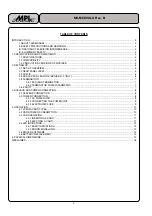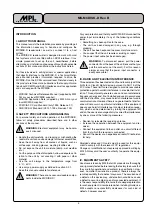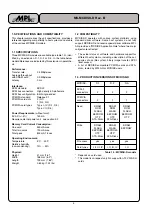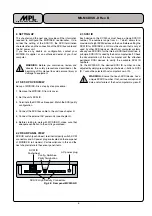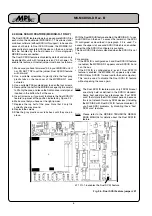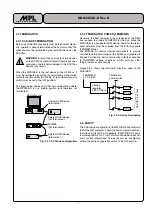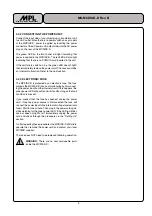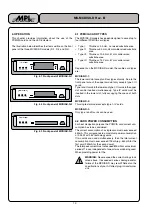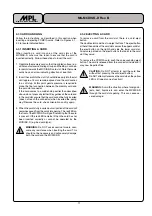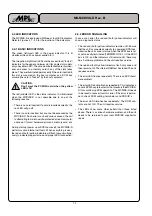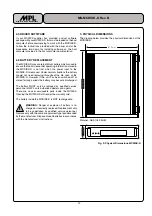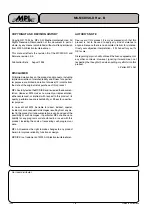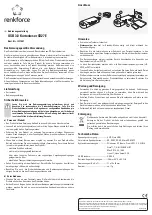
4
High-Tech Made in Switzerland
MS-MCDISK-D Rev. B
1. SPECIFICATIONS AND COMPATIBILITY
This chapter summarises the unit specifications, provides a
reference regarding compatibility to host systems and a table
of the various MCDISK-D models.
1.1 SPECIFICATIONS
Three MCDISK-D models are available (see table 1.3), iden-
tified by an extension: D-1, D-2 or D-3. In the table below,
model differences are indicated by this extension in parenthe-
sis.
Performance:
Transfer rate
2.5 MByte/sec
Average throughput
with SRAM card
0.9 MByte/sec
Latency
0 ms
Interfaces:
SCSI standard
SCSI-2
SCSI bus connectors
High density 50-pin/female
SCSI bus configuration 8-bit/single-ended
PCMCIA standard
Release 2.1
PCMCIA card slots
2 (D-1)
1 (D-2, D-3)
PCMCIA card types
Type I - IV (D-1, D-2)
Type I / II (D-3)
Power Requirements (without card):
9 VAC (+/- 5%)
150 mA
Requires external power unit , see section 3.2
Memory Card Current Consumption:
One card
450mA max.
Total two cards
700mA max.
Total peak
800mA, 1.5sec
Operating Environment:
Temperature
5°C ... 40°C
Relative humidity
(non-condensing)
10% ... 90%
Physical:
Height
41 mm (1.6")
Width
158 mm (6.2")
Length
199 mm (7.85")
Weight
0.60 kg (1.32 lbs)
1.2 COMPATIBILITY
MCDISK-D operates with various system platforms using
standard driver software. Some host systems do not fully
support MCDISK-D and require special driver software. MPL
AG provides a "MCDISK Application Note" where two major
subjects are reflected:
• The actual status of software and hardware support for
different host systems, including a description of the cat-
egories of use (file system, binary image transfer, SCSI
level access).
• A list of MCDISK-compatible PCMCIA cards and ATA-
disks, tested by MPL AG or MCDISK users.
1.3. PRODUCTION VERSIONS OF MCDISK-D
MCDISK-
D-1
D-2
D-3
2
SCSI-2
connectors
2
2
2
PCMCIA
connectors
2
1
1
Read
SRAM
SRAM
SRAM
ROM
ROM
ROM
FLASH
FLASH
FLASH
EEPROM
EEPROM
EEPROM
OTP
OTP
OTP
ATA-Disks
ATA-Disks
Write
SRAM
SRAM
SRAM
FLASH
FLASH
EEPROM
1
EEPROM
1
EEPROM
1
OTP
1
OTP
1
ATA-Disks
ATA-Disks
I/O access
yes
yes
yes
Card types
I, II, III, IV
I, II, III, IV
I, II
Table 1.3: MCDISK-D models
1
Depends on card used
2
This model is on request only. No support for +12V FLASH
cards


